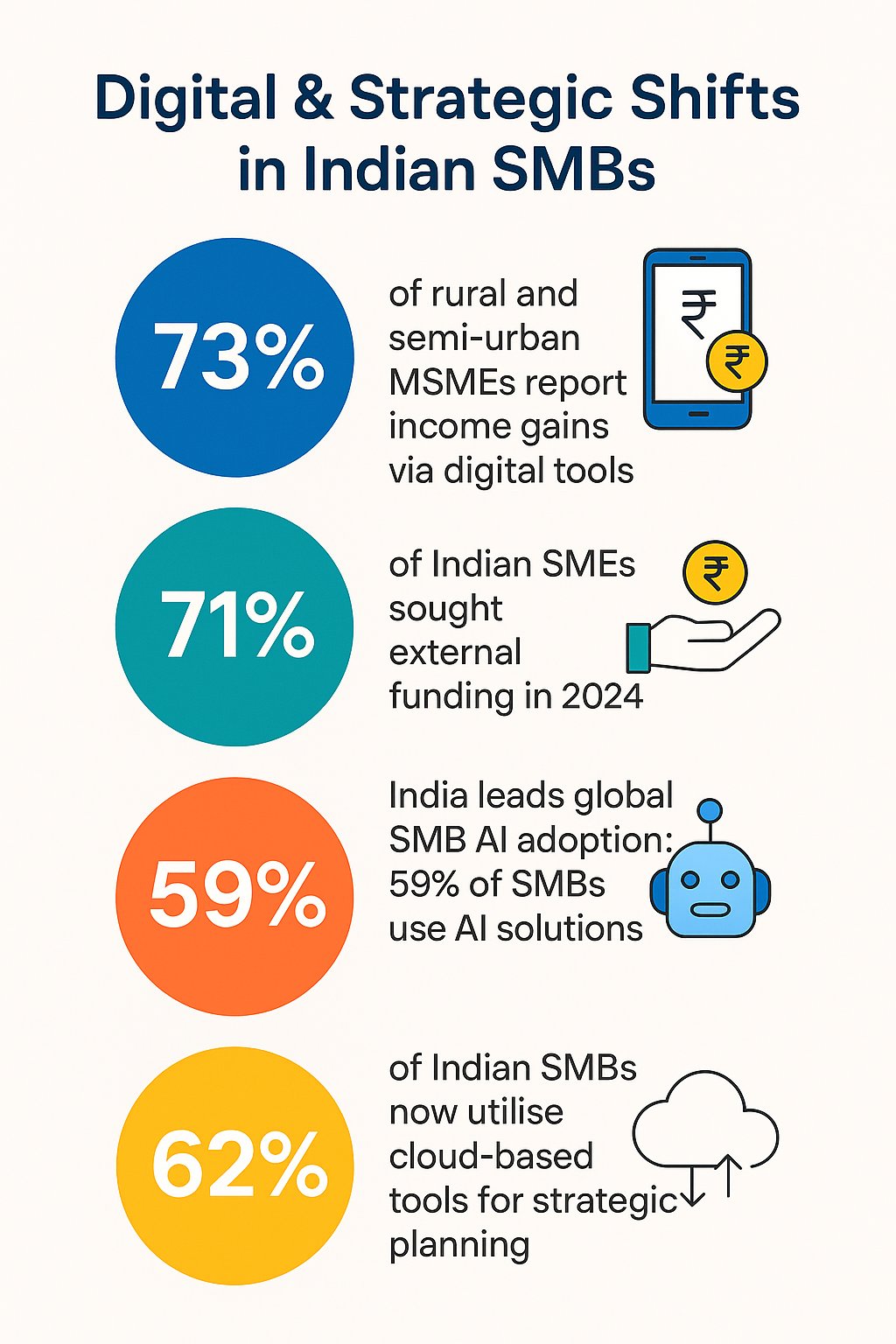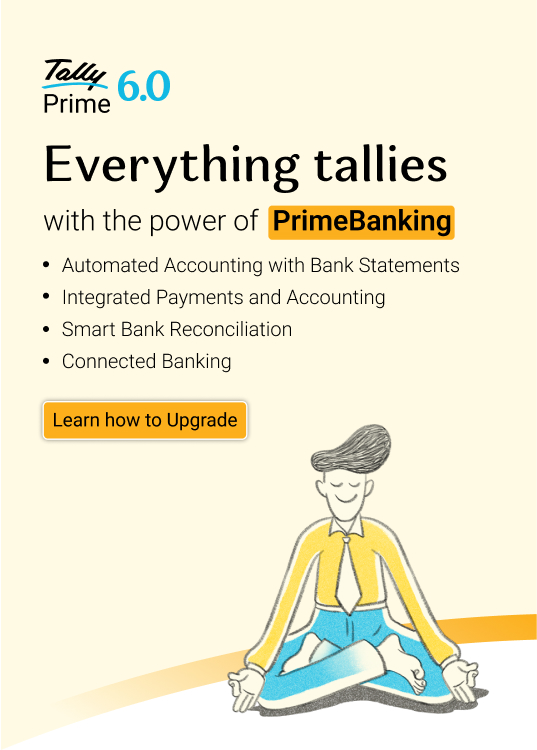Operating a business without a strategy is like setting out on a road trip from Mumbai to Chennai without a map or GPS. You possess a great vehicle (your product), a skilled co-driver (your team), and a full tank of fuel (your passion). Without a clear route, however, you will likely waste time, take wrong turns, and may never reach your destination. Many small business owners in India hear terms like 'SWOT analysis' or 'Porter's Five Forces' and think they are reserved for MBA classrooms or the boardrooms of massive corporations.
What if we told you that these fancy-sounding models are simple tools to help you make smarter decisions? Think of them not as rigid rules, instead view them as different types of maps. Some are great for exploring a new city, while others are perfect for navigating a mountain trail. The trick is picking the right map for your journey.
Let us demystify these business strategy models and find the perfect fit for your small or medium-sized business (SMB).
Top business strategy models
Strategy models are frameworks that help you look at your business and its environment from different angles. They give structure to your thoughts and help you move from 'doing business' to 'building a business'. Here are five popular ones, explained in plain English.
1. SWOT analysis (The self-aware friend)
This is the classic. SWOT stands for Strengths, Weaknesses, Opportunities, and Threats. It is a straightforward way to assess where you stand.
- Strengths: What does your business do really well? (e.g., a loyal customer base, a unique recipe)
- Weaknesses: Where could you improve? (e.g., poor online presence, limited funding)
- Opportunities: What external factors could you take advantage of? (e.g., a growing local market, a new social media trend)
- Threats: What external factors could harm your business? (e.g., a new competitor, rising supplier costs)
Pros & Cons
- Pros: It is incredibly simple and can be done quickly with your team. It gives you a great snapshot of your current situation.
- Cons: It can be subjective, and it does not tell you what to do next. It is a starting point, not a complete roadmap.
This model is the best for startups trying to find their footing and any business needing a quick, regular health check.
2. Porter’s five forces (The neighbourhood watch)
Developed by Michael Porter, this model helps you understand the competitive landscape of your industry. It is like being the neighbourhood watch, keeping an eye on everything that affects your turf. The five forces are:
- Competitive Rivalry: How many competitors do you have?
- Threat of New Entrants: How easy is it for new players to enter your market?
- Bargaining Power of Suppliers: How much control do your suppliers have over prices?
- Bargaining Power of Buyers: How much power do your customers have to drive down your prices?
- Threat of Substitute Products: Can customers find a different way to do what you offer?
Pros & Cons
- Pros: It provides a deep understanding of your industry’s power dynamics and long-term profitability.
- Cons: It can be complex and is more focused on the external environment than on your internal strengths.
This business strategy model is the best for growing SMBs looking to expand or established businesses trying to defend their market position.
3. Blue ocean strategy (The trailblazer)
Instead of battling it out in a bloody 'red ocean' of competition, this strategy is about finding or creating an uncontested market space, a 'blue ocean'. Think of Cirque du Soleil, which did not compete with traditional circuses; instead, it created a new market blending circus arts and theatre.
Pros & Cons
- Pros: It can lead to massive growth and make the competition irrelevant.
- Cons: It is high-risk and requires significant innovation and creativity. Finding a true blue ocean is tough.
This framework proves to be the best for innovative startups or established businesses in a saturated market looking for a new direction.
4. BCG matrix (The portfolio manager)
If your business sells multiple products or services, the Boston Consulting Group (BCG) Matrix helps you decide where to invest your resources. It categorises your offerings into four quadrants based on market share and market growth:
- Stars: High growth, high market share (Invest in these!)
- Cash Cows: Low growth, high market share (Milk them for cash to fund Stars)
- Question Marks: High growth, low market share (Could become Stars or Dogs; decide whether to invest more or cut)
- Dogs: Low growth, low market share (Consider divesting or discontinuing)
Pros & Cons
- Pros: A simple, visual tool for managing a product portfolio.
- Cons: It can be an oversimplification and does not account for the synergies between products.
This business strategy model is the best for established SMBs with a diverse range of products or services.
5. OKRs (The goal-setter)
This is not a traditional strategy model; it is a framework for implementing strategy. OKRs stand for Objectives and Key Results.
- Objective: What do you want to achieve? It should be ambitious and inspiring. (e.g., "Become the go-to sweet shop in our neighbourhood.")
- Key Results: How will you measure your progress towards the Objective? They must be specific and measurable. (e.g., "Increase walk-in customers by 30%," "Get 50 positive online reviews.")
Pros & Cons
- Pros: It connects your company’s big goals to the daily work of your team, creating focus and alignment.
- Cons: It requires discipline and regular check-ins to be effective.
This one is the best for any business of any size that wants to turn its strategy into concrete, trackable actions.

Source - Economic times, Economic Times, Color Whistle, Global Growth Insights
So, which model is your business's perfect match?
Choosing a model depends on your business's age, size, and goals.
- If you are a brand-new startup, begin with a SWOT Analysis. It is the quickest way to get your bearings. It is like checking your location on Google Maps before you start driving.
- If you are a growing SMB, use Porter's Five Forces to understand the playground you are competing in. Then, use OKRs to set clear, ambitious targets for your team to hit as you scale.
- If you are an established business, the BCG Matrix can help you manage your existing products. At the same time, use Blue Ocean Strategy thinking to explore new avenues for growth and avoid stagnation.
Keep it simple, superstar!
The biggest mistake is overcomplicating things. You do not need a 100-page report.
- Pick one model to start with. Do not try to do everything at once.
- Involve your team. The best strategies come from diverse perspectives.
- Make it a living document. Revisit your strategy every quarter. Did you hit your goals? What has changed?
- Use it as a guide, not a gospel. These models are meant to provoke thought, not dictate your every move.
Your business, your strategy
Strategic thinking is not an exclusive club for the big players. It is the simple act of looking up from your day-to-day work and asking, "Where are we going, and what is the best way to get there?"
By using one of these models, you are not hoping for success; you are planning for it. So pick a framework that feels right, grab a whiteboard, gather your team, and start mapping out your path to success. You have got this!

















